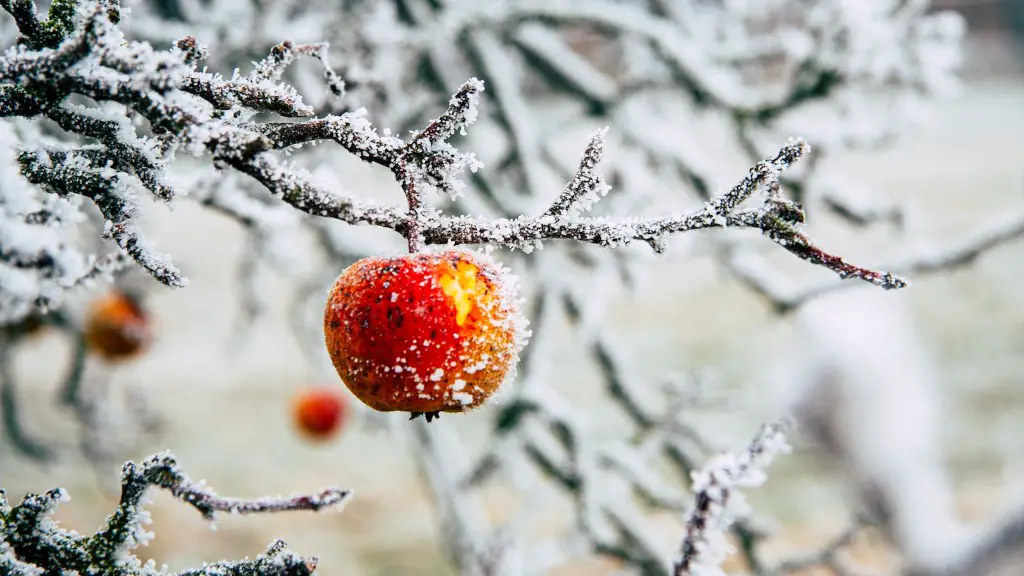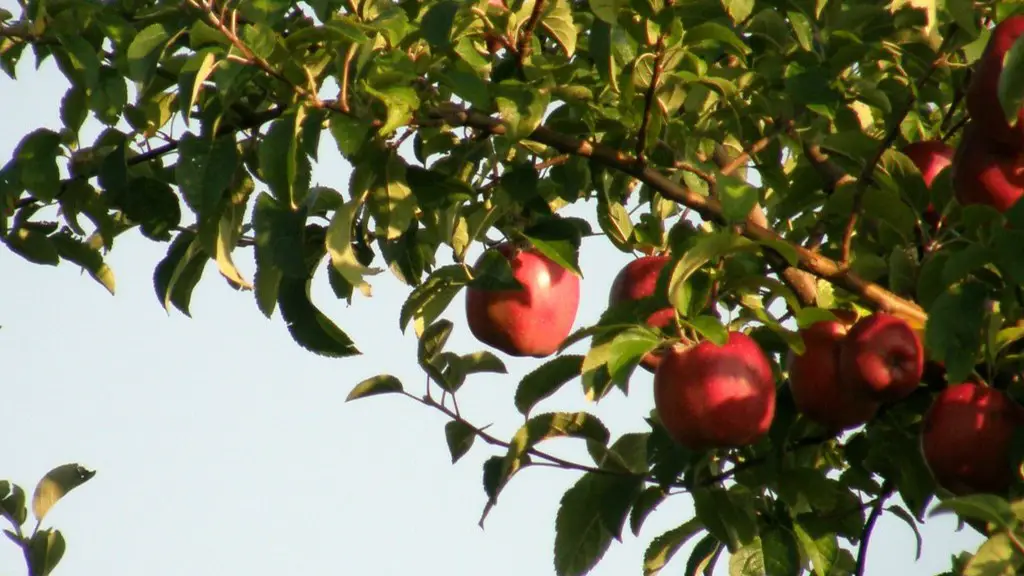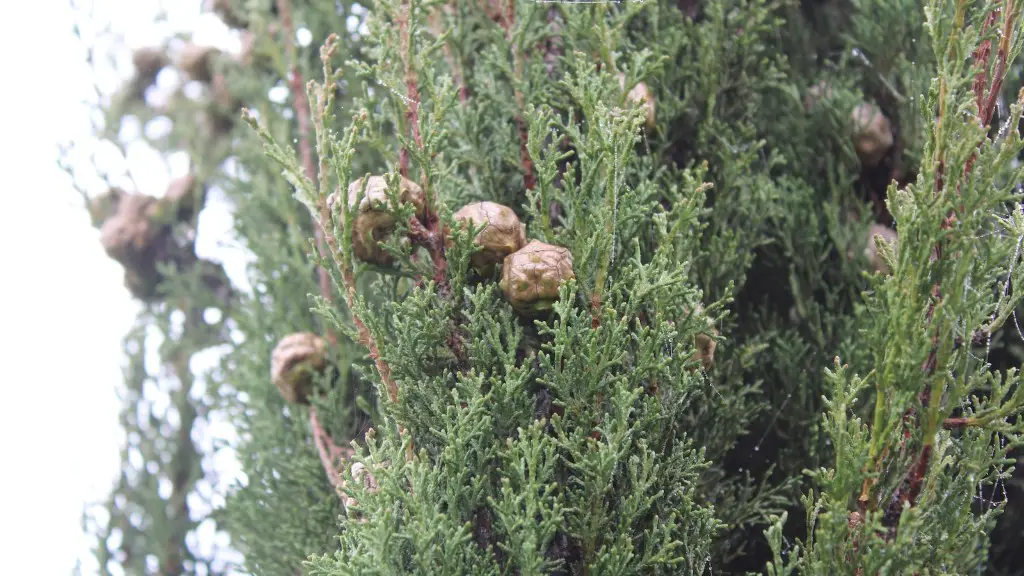Growing an apple tree requires patience and regular care. While a bought sapling could last for years on its own, constant maintenance can ensure its health and quality of its harvest. A few simple steps will ensure an apple tree is well supported and can bear fruit for years to come.
Firstly, planting in a suitable site is essential – one with well-draining soil, enough sunlight, and which is sheltered from winds is ideal. Digging a large enough hole and loosening the ground are also key. After planting, keeping soil around the tree weed free and mulched is important, as it prevents competition for resources and helps retain moisture.
Secondly, water the tree regularly. While rain can provide most moisture, supplementing water during the tree’s first few years is important, especially in hot weather. A slow-release irrigation system can work, but regular pressurized water from a garden hose is an easier option.
Thirdly, controlling pests and diseases is paramount. Prompt pruning and spraying with a suitable chemical solution removes pests, and dealing with infections quickly prevents infestations from taking hold. Regularly checking for signs of disease and insect damage is also key.
Forthly, providing the right nutrition is important. Apples prefer soils with a high pH, so many great products are available to bring pH levels up when needed. A steady supply of nitrogen is also essential, so appropriate fertilization and deep cultivation of soil are essential.
Fifthly, regular inspections are vital. Checking for insect damage and diseases, as well as ensuring the rootstock is able to hold the tree sturdy, are essential tasks which should be undertaken at least once a year. Any major issues or evidence of damage or disease should be noted.
Finally, it is critical to provide the tree with enough space. It should not be crowded, otherwise diseases and infections can spread quickly. For best results, prune and train the branches, but avoid shaping the tree too often to avoid weakening its structure.
Planting a Supporting System for an Apple Tree
When considering how to support an apple tree, a good support system is key. One way of doing this is to use stakes and ties secured around the tree’s trunk. This will help to stabilize the tree and encourage the growth of an upright trunk. It’s important when tying the tree to the stake not to tie it too tight or damage the bark, and to use wide ties that are flexible and able to expand as the tree grows.
Stakes can come in a few types – wooden, bamboo, or metal. It is important to choose wooden stakes that are untreated with harmful chemicals or non-organic compounds. It is also essential to check the stake periodically to ensure it is still firmly in the ground, and maybe replace over time.
Guying an Apple Tree
Another way to support an apple tree is by using guying. Guying consists of four guy wires attached around the perimeter of the tree. A stake is then driven in the ground and the wire attached to it. The wire is then tensioned and secured to other stakes. This helps the tree stay in place and encourages the tree’s branches to grow outward, instead of downward.
It is important to apply the wire evenly and not to wrap the wire around the tree’s trunk. The wires should also be checked on a regular basis and tension adjusted as the tree grows into its new form. To ensure consistency in growth, it is important to spread the guy wires out evenly and not to over tension them.
Propping an Apple Tree
For trees that are already planted, propping can be used to help support the tree and its branches. Propping is done by attaching a metal or wooden support to the trunk of the tree, and the branch is then tied to the support to hold the branch up. This helps to prevent the branch from buckling or breaking under the weight of the fruit.
When propping a tree, it is important to make sure the tree is not over-stressed, and to use wider metal supports. It is also important to ensure the branch is as vertical as possible, and to use soft, flexible ties for attaching the branch to the support. Additionally, it is important to check the support religiously and adjust it as needed.
Training an Apple Tree
For young apple trees, training is key. The aim is to shape them into a form which the tree is comfortable in, and can be sustained. Training consists of pruning and staking, as well as providing a suitable level of sunlight and nutrition to keep the tree healthy. This involves periodic pruning, decision as to how many apples to leave on the tree, as well as pruning weak and short branches.
It is important during training to create a good framework for the development of the tree’s branches. This helps the tree to spread out laterally and ensures that the tree stands sturdy. It is also important to give the tree space to grow and get adequate light, as this helps promote good growth and fruit production.
Weeding an Apple Tree
It is essential to keep the area around the apple tree free of weeds. Weeding around the tree reduces competition for the tree’s resources, such as water and nutrients, and allows the tree to put its energy into producing fruit. In addition to this, weeding around the tree prevents any pests or diseases which may be carried in the weeds from infecting the tree.
Weeding is best done before weeds begin to set seed. It is also important to remove any mulch that may have built up around the edge of the tree and to rake the area to remove any that may have been brought in from another location. Additionally, it is important to ensure any weed killers used are organic and safe for fruit trees.
Protecting an Apple Tree from Frost
In areas of cold weather and frost, it is essential to protect an apple tree. This is done by providing insulation for the tree and its rootstock, as well as minimizing sprays and fertilizers in autumn. Covering the tree with a lightweight blanket or fabric will also help protect it in cold weather. Additionally, covering the trunk and branches with a thick layer of mulch will help to protect the tree’s roots from frost.
Lastly, it is important to avoid pruning the tree late in the season, as this can encourage new growth which is vulnerable to frost damage. If pruning is needed later in the season, it is important to prune after the last frost or wait until spring. Cutting back branches which are dead or damaged can also help to protect the tree.



